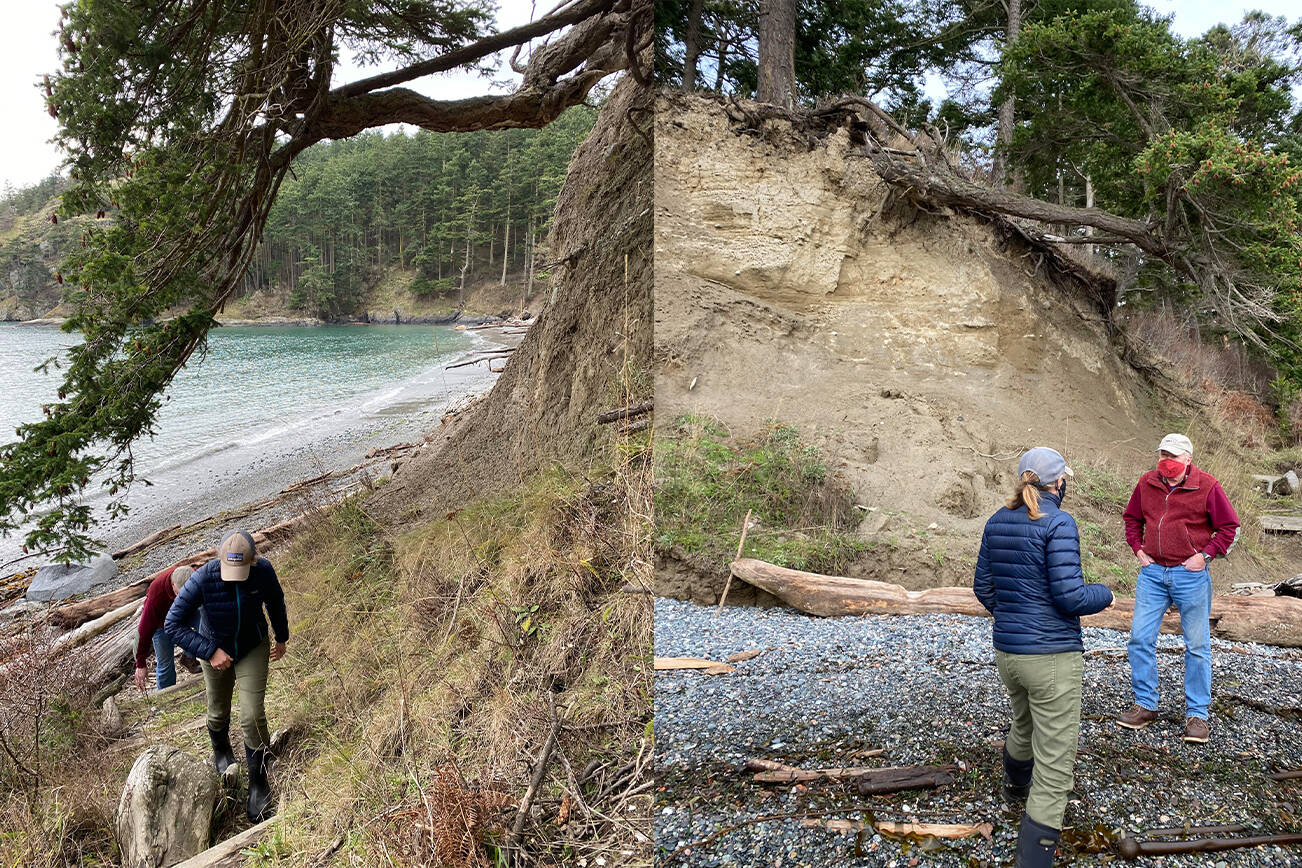On Sept. 24, the Washington State Salmon Recovery Funding Board announced the award of $21 million in grants across the state to aid in salmon recovery.
The grants, given annually, went to 105 projects in 29 of the state’s 39 counties. The grants will pay for work to restore salmon habitat, including repairing degraded habitat in rivers, removing barriers blocking salmon from reaching the ocean, and conserving pristine habitat.
“Salmon are important to every Washingtonian, whether they spend time fishing, eat salmon, rely on salmon for their business or use salmon in their cultural celebrations,” said Gov. Jay Inslee. “It’s imperative that we improve the areas salmon need, and these grants help do that.”
San Juan County received $308,602. The San Juan Preservation Trust will use this grant to buy a voluntary land preservation agreement on nearly 12 acres of McArdle Bay shoreline on southern Lopez Island. The land includes high-quality near-shore habitat, about 346 feet of shoreline, 212 feet of a pocket beach with overhanging vegetation and a mid-sized feeder bluff. Protecting the land from development will help protect the ecological attributes of McArdle Bay, which are key to the success of juvenile salmon using the San Juan Islands. The bay is used by Chinook salmon, which is a species listed as threatened with extinction under the federal Endangered Species Act. The San Juan Preservation Trust will contribute $634,650 in staff labor and donations of cash and land or property interest.
Why are salmon in trouble?
As Washington’s population grew, the number of salmon dwindled. By the end of the twentieth century, the numbers of wild salmon and steelhead had dropped so much that the federal government declared species in nearly three-fourths of the state as threatened or endangered. The Legislature created the Salmon Recovery Funding Board in 1999 to determine how best to distribute state and federal funding to recovery projects.
Why is recovery important?
Salmon are a keystone species upon which many other animals rely. One report documented 138 species of wildlife, from whales to flies, that depend on salmon for their food. Salmon fishing also is important to Washington’s economy. Commercial and recreational fishing in Washington is estimated to support 16,000 jobs and $540 million in personal income. Recreationally, an estimated $1.5 billion is spent annually on fishing and harvesting shellfish in Washington, supporting many rural families and businesses. In addition, Washington State is obligated to uphold treaty-reserved fishing rights for Indian tribes and has a duty to ensure salmon are present and available for harvest.
Investing in salmon recovery also helps local businesses. Every $1 million spent on forest and watershed restoration generates between 15.7 and 23.8 jobs. About 80 percent of that funding stays in the county where the project is located. Overall, salmon recovery funding since 1999 has resulted in more than $1 billion in economic activity.
How Projects are Chosen
Projects are selected by lead entities, which are watershed-based groups that include tribes, local governments, nonprofit organizations and citizens. The projects are based on federally approved, regional salmon recovery plans. Lead entities vet projects through citizen and science committees. The projects are then reviewed by regional organizations and submitted to the Salmon Recovery Funding Board for funding. Regional salmon recovery organizations and the board review each project for cost-effectiveness and to ensure they will benefit salmon.





